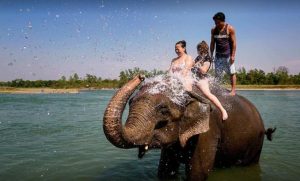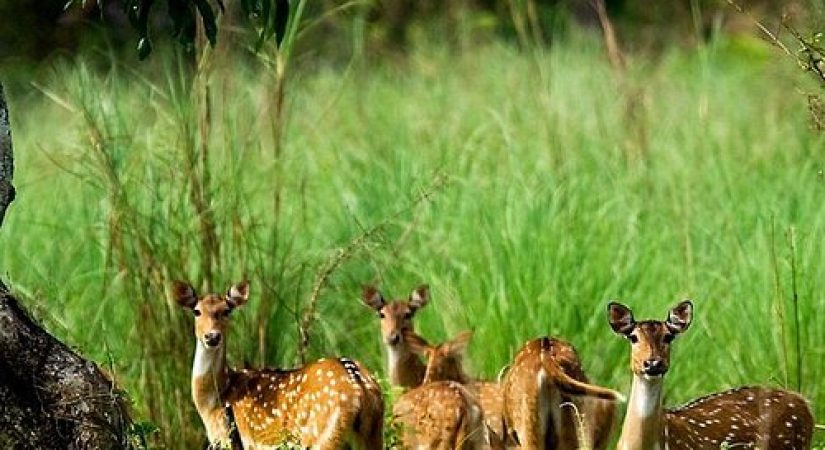1-10 people
Hotel / Home Stay
415m
B / L / D
Tourist Bus / Private Car
Mar - May & Sept - Nov
Chitwan Safari refers to the thrilling wildlife experience in Chitwan National Park, one of Nepal's most famous conservation areas. Located in the southern part of the country, near the border with India, Chitwan offers a rich diversity of flora and fauna, making it a popular destination for nature and wildlife enthusiasts.

1. Wildlife Sightings
- Royal Bengal Tiger: Though elusive, this big cat is the main attraction for many.
- One-Horned Rhinoceros: Chitwan is home to a significant population of these endangered creatures.
- Elephants: The park is well-known for its elephant safaris.
- Birdlife: Over 500 species of birds are found here, including endangered species like the Greater Adjutant Stork.
- Leopards, Sloth Bears, and Crocodiles: These are some of the other fascinating creatures you may spot.
2. Safari Options
- Jeep Safari: One of the most popular ways to explore the park. It’s fast, comfortable, and allows you to cover a large area in search of wildlife.
- Elephant Safari: Ride on the back of an elephant through the jungle, providing a unique perspective of the park.
- Canoe Ride: A boat ride on the Rapti River allows you to see aquatic creatures like crocodiles and enjoy birdwatching.
- Nature Walks: Accompanied by a guide, walking through the jungle offers a more intimate experience with nature.
3. Cultural Experiences
- Tharu Village Visit: Chitwan is home to the indigenous Tharu people. You can explore their traditional homes and learn about their culture.
- Cultural Performances: Traditional dance performances by the Tharu community can be arranged in nearby resorts.
4. Best Time to Visit
- Winter (October to March): The best time to visit Chitwan for safaris. The weather is cool and dry, ideal for wildlife viewing.
- Summer (April to June): It can get hot, but wildlife sightings can be easier since animals tend to gather around water sources.
- Monsoon (July to September): The park can be difficult to explore due to rain, but the lush greenery is stunning during this period.
5. Where to Stay
- Resorts and Lodges: There are many resorts and lodges near the park entrance, offering everything from basic accommodations to luxurious stays.
- Homestays: Some tourists also opt for a more authentic experience by staying with local families.
6. How to Reach Chitwan
- By Air: The nearest airport is in Bharatpur, about 20 km away from the park, with regular flights from Kathmandu.
- By Road: Chitwan is about a 5-6 hour drive from Kathmandu. Buses, private vehicles, and tour operators offer transportation.
- By Rail: Bharatpur is also connected by train to other major cities in Nepal.
7. Conservation Efforts
- Chitwan National Park is a UNESCO World Heritage Site, and ongoing conservation efforts focus on protecting endangered species and maintaining the biodiversity of the region.

Trip Outline
Day 1: Drive to Chitwan Sauraha
Day 2: Local Activities
Day 3 : Departure by Tourist bus
Detail itinerary
Day 1 Kathmandu – Chitwan (160km
6 Hrs L/D Hotel / Home Stay
Drive to Chitwan. Be greeted by staff at bus station and transferred to your hotel
Day 2 Local Activities
8 Hrs B/L/D Hotel / Home Stay
Enjoy a full day of jungle activities including elephant safari, nature walk, bird watching, jungle drive, Tharu stick cultural dancing, and more. If we are especially lucky, we will see the increasingly rare Bengal tiger. Sightings of the one-horned rhinoceros are also possible
day 3 Departure
7 Hrs B
Departure
What's included?
- Tourist Bus
- 3 time meals during the tour
- Local activities ( Elephant ride , Jungle walk, Elephant bath, Village walk, Tharu cultural dance, Jeep Safari, Bird watching )
- Guide
- National Park entry Fee
What's not included?
- Personal Bar Bills
- Mineral water, Cold drinks
- Trip for guide


